Abstract
The rate of inactivation of bacteriophage f2 and poliovirus 1 (CHAT) by NH3 was strongly influenced by temperature. The process was pseudo-first order at all temperatures and NH3 concentrations. Poliovirus was inactivated at a greater rate than f2, but the change in the rate of inactivation with increasing temperature in the range of approximately 10 to 40 degrees C was greater for f2 than for poliovirus. At higher temperatures, the rate of change was greater for poliovirus. Arrhenius plots of the data were biphasic, indicating that two inactivation processes were occurring, one for the low temperature range and another for the high temperature range. However, the magnitudes of the thermodynamic variables for f2 were low enough, as calculated for the low (10 to 35 degrees C) and high (35 to 60 degrees C) phases, that inactivation could have occurred by breakage of nucleic acid chains. For poliovirus, the sizes indicated possible involvement of nucleic acid at the low temperatures (10 to 40 degrees C) but some unknown mechanism for the high temperatures (40 and 50 degrees C).
Full text
PDF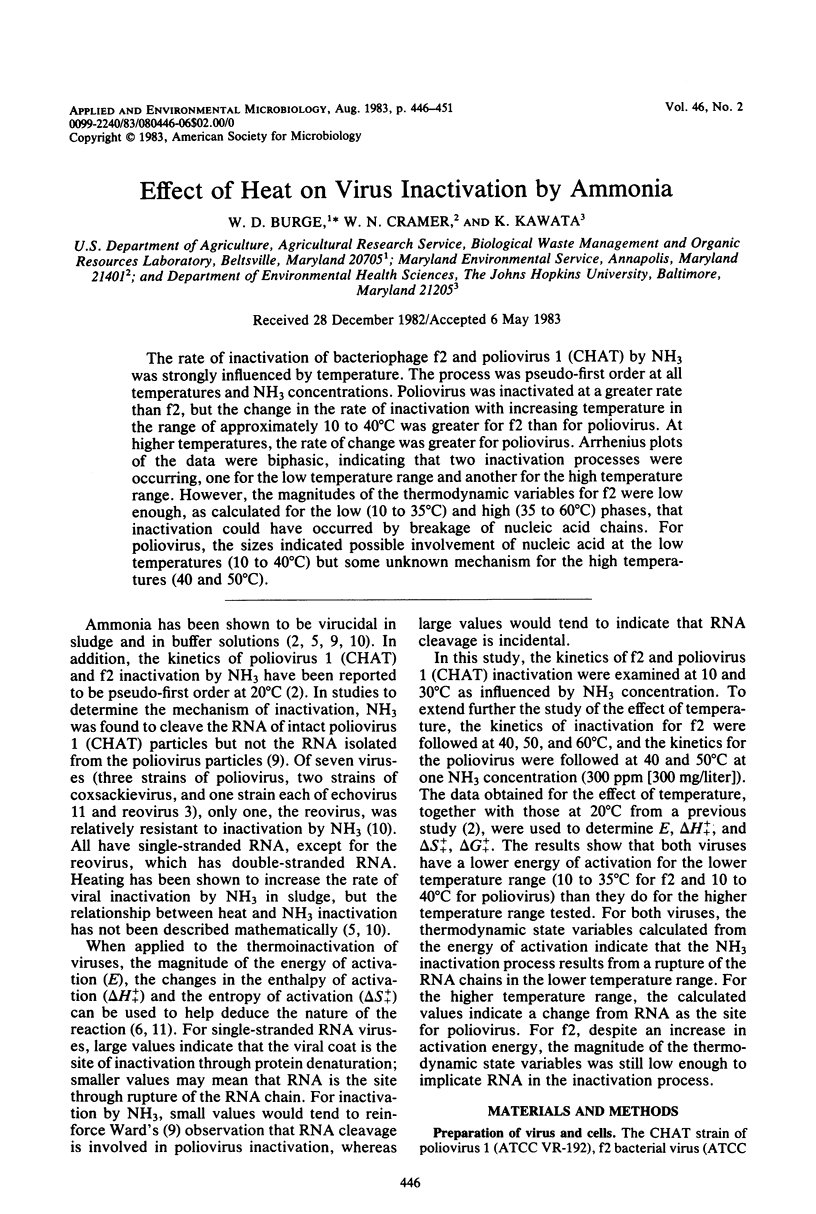

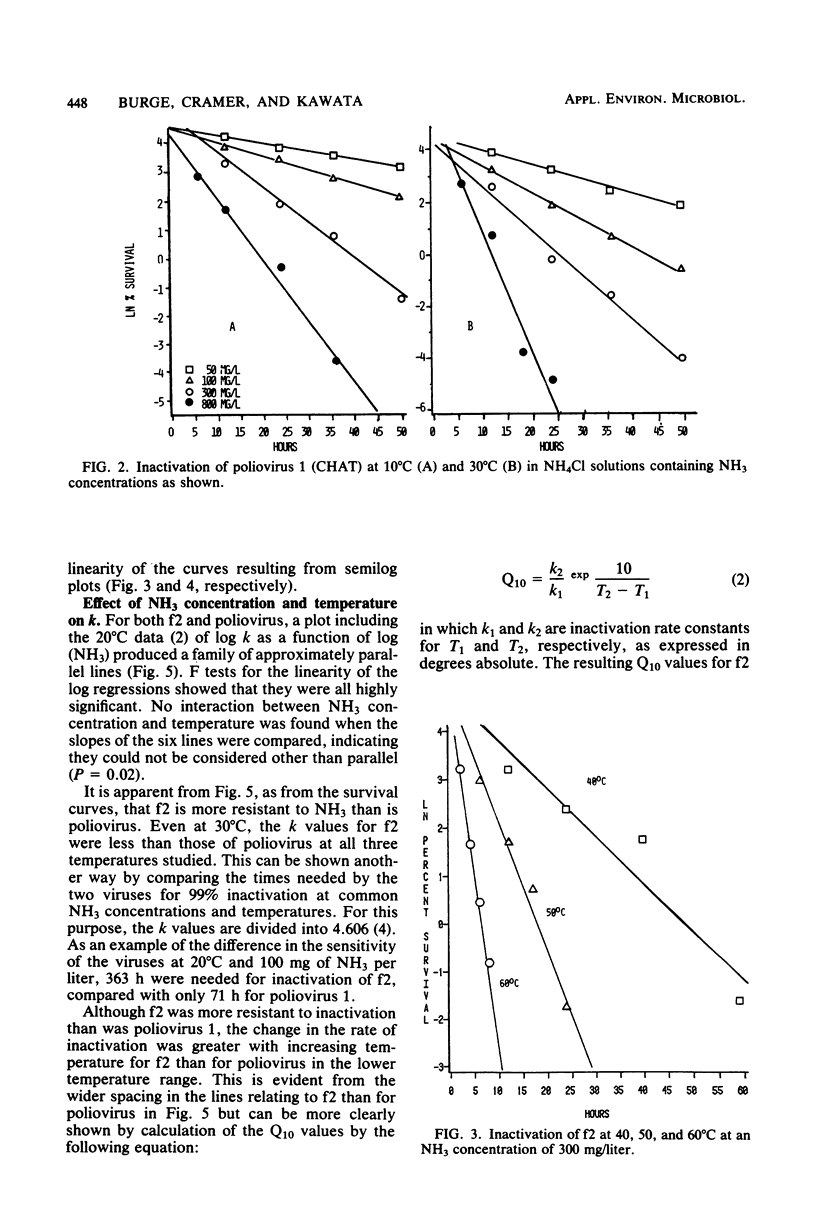
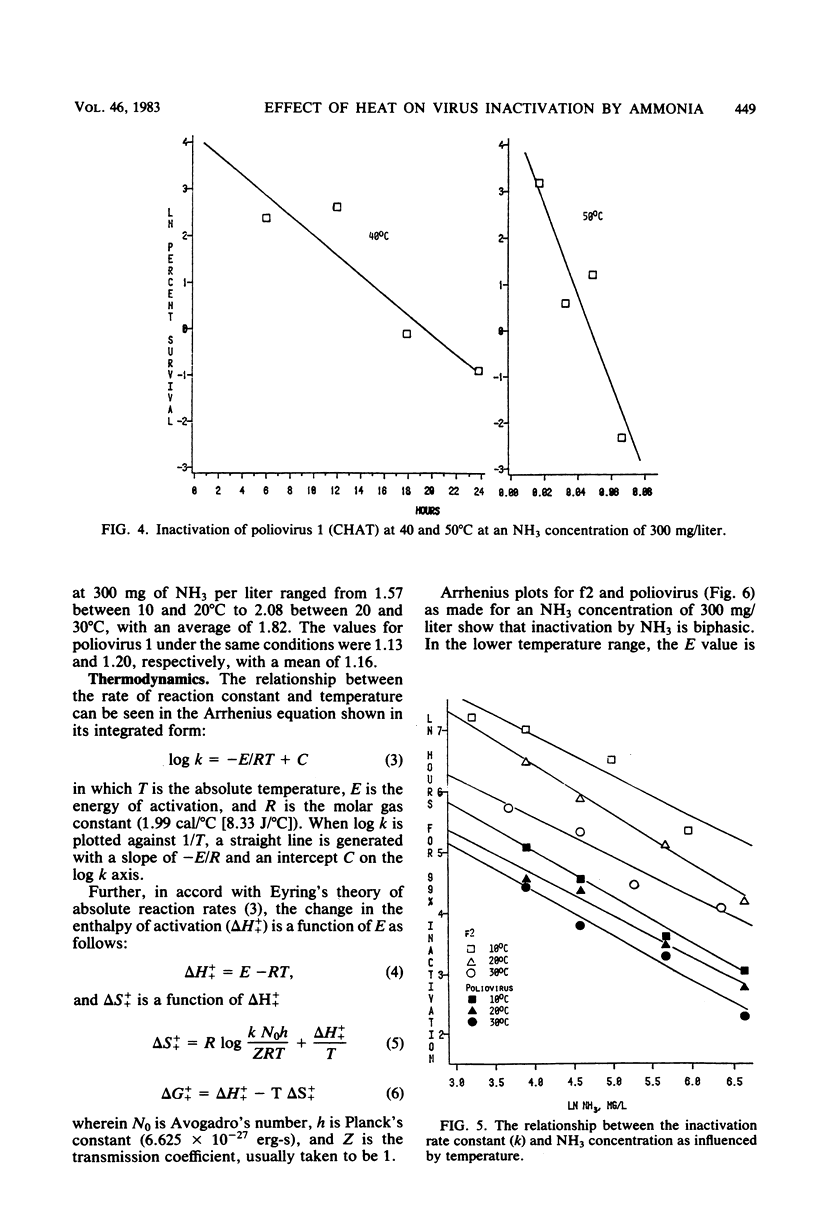
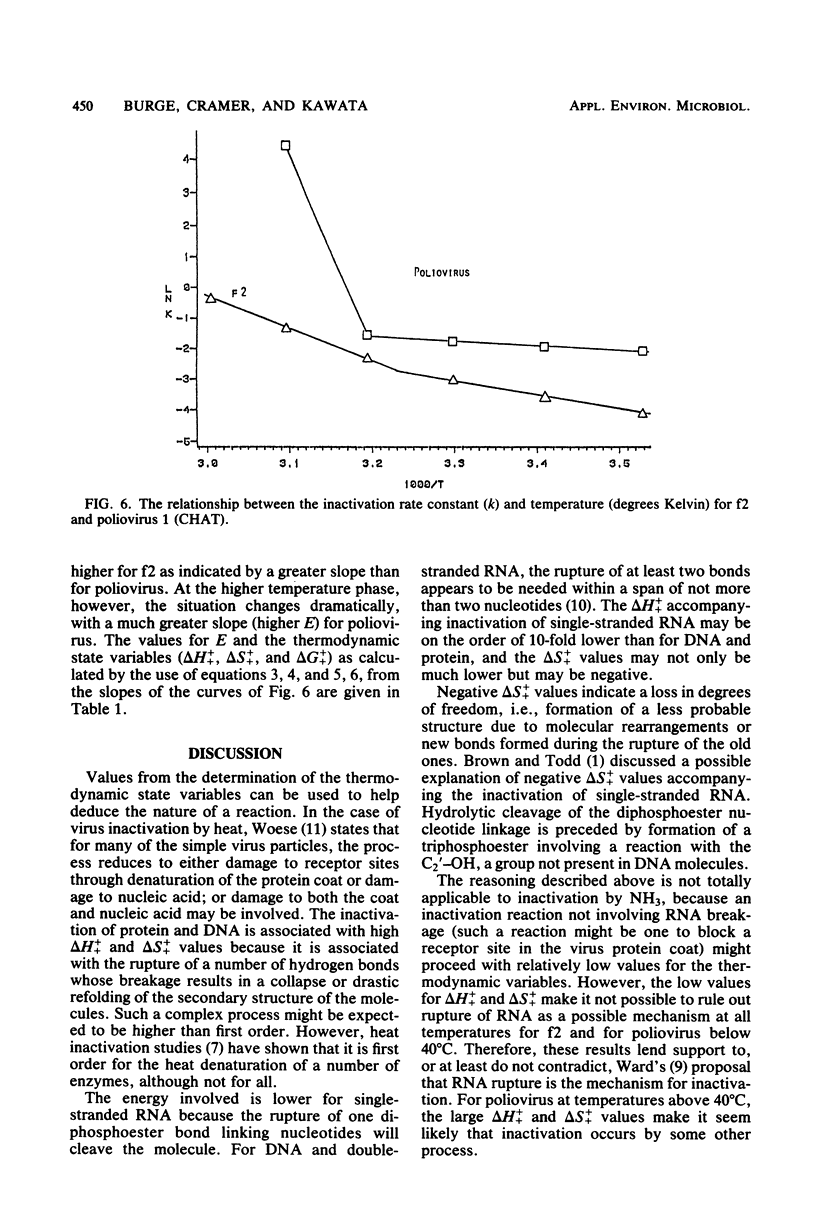
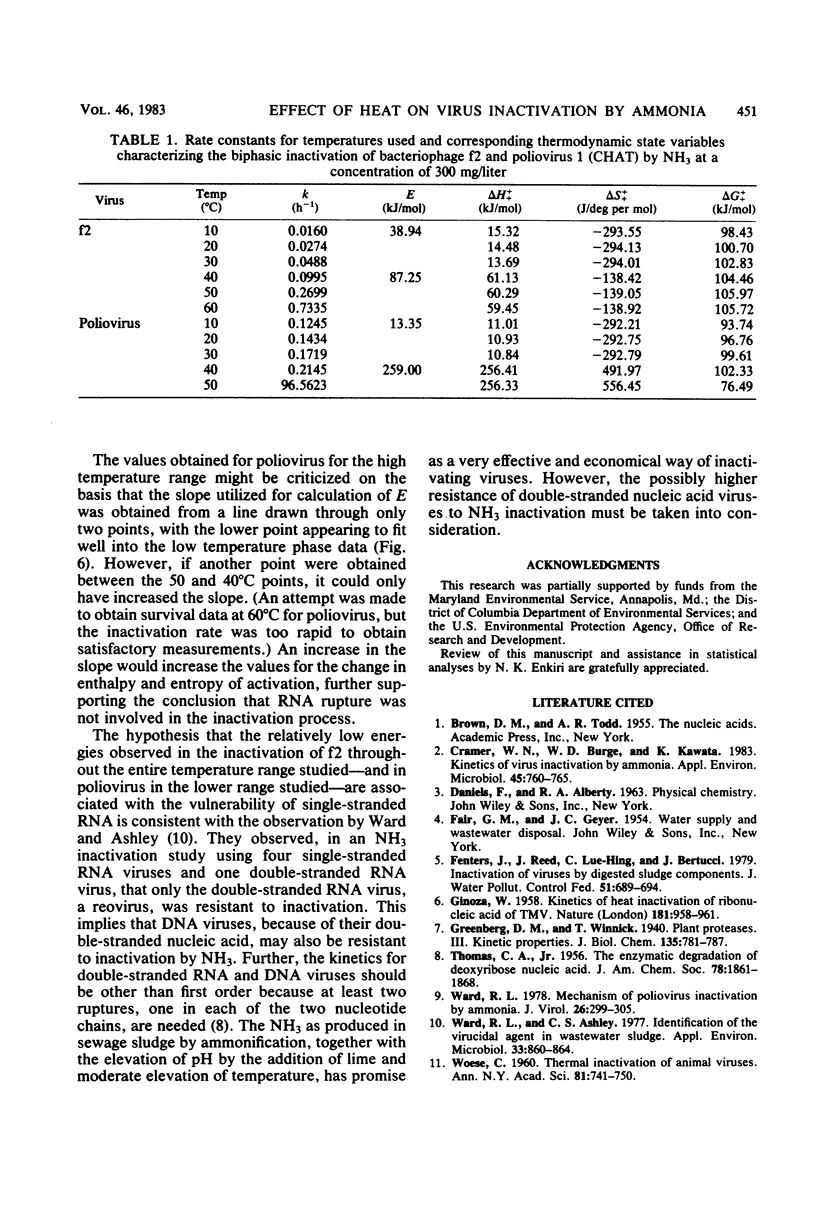
Selected References
These references are in PubMed. This may not be the complete list of references from this article.
- Cramer W. N., Burge W. D., Kawata K. Kinetics of virus inactivation by ammonia. Appl Environ Microbiol. 1983 Mar;45(3):760–765. doi: 10.1128/aem.45.3.760-765.1983. [DOI] [PMC free article] [PubMed] [Google Scholar]
- GINOZA W. Kinetics of heat inactivation of ribonucleic acid of tobacco mosaic virus. Nature. 1958 Apr 5;181(4614):958–961. doi: 10.1038/181958a0. [DOI] [PubMed] [Google Scholar]
- WOESE C. Thermal inactivation of animal viruses. Ann N Y Acad Sci. 1960 Jan 13;83:741–751. doi: 10.1111/j.1749-6632.1960.tb40943.x. [DOI] [PubMed] [Google Scholar]
- Ward R. L., Ashley C. S. Identification of the virucidal agent in wastewater sludge. Appl Environ Microbiol. 1977 Apr;33(4):860–864. doi: 10.1128/aem.33.4.860-864.1977. [DOI] [PMC free article] [PubMed] [Google Scholar]
- Ward R. L. Mechanism of poliovirus inactivation by ammonia. J Virol. 1978 May;26(2):299–305. doi: 10.1128/jvi.26.2.299-305.1978. [DOI] [PMC free article] [PubMed] [Google Scholar]


